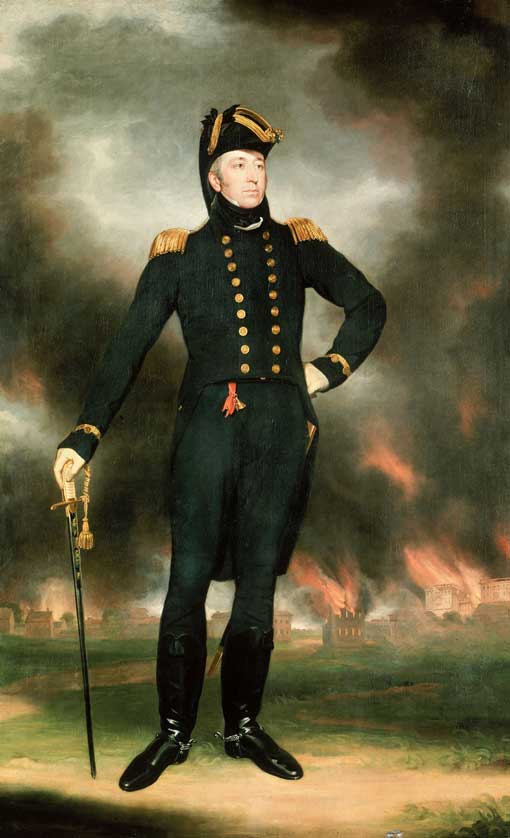George Cockburn 1772–1853
John James Halls (1776–1834)
Oil on canvas, c. 1817
National Maritime Museum, Greenwich, England
Sir George Cockburn went to sea as a boy, rose through the ranks to rear admiral, and was entrusted to guard Napoleon in captivity. However his greatest moment of glory, which he chose for this portrait, was the burning of Washington on August 24–25, 1814. Although a naval officer and therefore not in command on land, Cockburn was the driving force behind the operation, encouraging Major General Robert Ross to take the capital.
While Cockburn respected Ross’s prohibition on the destruction of private property, he made a notable exception in his personal vendetta against the National Intelligencer. An avid reader of American newspapers, Cockburn considered the Intelligencer to be the voice of the Madison administration and its profiles of him particularly unflattering. He ordered its offices destroyed, paying particular attention that all the C’s from the type case were destroyed.

